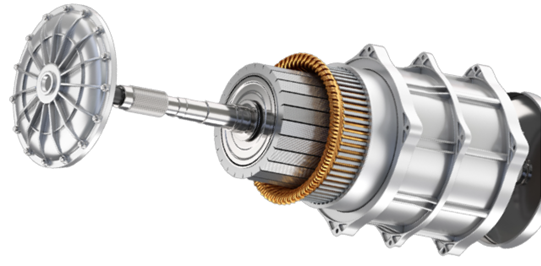The evolution of the electric vehicle market
When the battery electric vehicle market was first established, the initial focus was on small economy cars that were good for the environment. Today, Tesla is the poster child for the industry, having reinvented the EV as a performance and luxury category. The watershed year for high performance EVs was 2017, when the number of Tesla Model X and Model S cars produced with more than 700 horsepower (hp) more than doubled from the prior year to more than 40,000 cars. During the same year, Tesla produced a similar number of Model X and Model S cars with 524 hp.
High-performance EV is now a dynamic sector with start-ups and traditional vehicle manufacturers entering the space. During 2020, cars with more than 500 hp accounted for 4.1% of the total EVs sold. By 2028, more than 13% of all EVs are expected to meet this performance level — 2.7+ million vehicles.
During that same period, 700+ hp EVs are expected to see similarly increased activity. As of the end of 2021, there were nine companies planning to produce 24 different models of EVs at this performance level by 2028. Based on announced plans, 700+ hp EVs will grow to more than 150,000 produced per year from approximately 26,500 units in 2021. Given recent market news and activity, the actual number is likely to be greater, and there are plans for additional supercars not included in the numbers above that will feature full electric or hybrid powertrains. The highest performing EV supercar will feature 2000+ hp.
Automotive manufacturers must adopt improved power- and torque-dense, efficient, lightweight, and compact powertrain technology to meet the new requirements for these high-performance EVs.

Materials solutions for advanced powertrain design
Electric motors serve as one of the key components of the EV powertrain, and the soft magnetic stator and rotor iron plays an important role in motor performance. Hiperco® 50 FeCo stators and rotors can significantly improve motor and vehicle performance compared to the thicker non-grain oriented electrical steel (NOES) commonly used in EVs.
With a direct material swap of Hiperco 50 for 0.35 mm NOES, without any additional changes, motor torque is increased by 18%, maximum continuous motor power is 60% higher, and the motor runs up to 60°C cooler. The EV using this motor would use 8% less battery power throughout a typical UDDS drive cycle, improving range and/or operating costs.
Hiperco 50 also affords EV designers the ability to reduce the motor’s footprint. A Hiperco 50 motor can be made 15% smaller and generate the same torque as the NOES motor with 45% higher maximum continuous power. The EV using this motor would use nearly 11% less battery power throughout the UDDS drive cycle.
For a bigger performance boost, the high magnetic saturation and permeability of Hiperco stators and rotors can be accessed by increasing the inverter power. A direct material swap of Hiperco 50 for 0.35 mm NOES in conjunction with a higher power inverter can net 32% higher motor torque. This allows for even faster EV acceleration on demand (up to 20% faster from 0–60 mph, though it depends on several factors beyond the motor), while otherwise leaving the continuous power, motor temperature, and EV battery power draw unaffected for the typical UDDS drive cycle. Or designers can choose to increase the inverter power and reduce Hiperco 50 motor size by 25%, thereby generating the same torque as the NOES motor with 35% higher maximum continuous power.
These performance improvements can be achieved using FeCo alloys within a limited set of design modifications. Greater performance improvements can be achieved with Hiperco 50 by making more modifications in EV design rules and options. The electric motor experts at Carpenter Electrification can help you dial in the best material implementations to balance performance and cost. Our solutions and expertise will help you innovate to spec, to scale, and on budget.
Read our whitepaper to learn more about how Carpenter Electrification's power dense alloys and motor stacks are enabling the next generation of EV performance.

